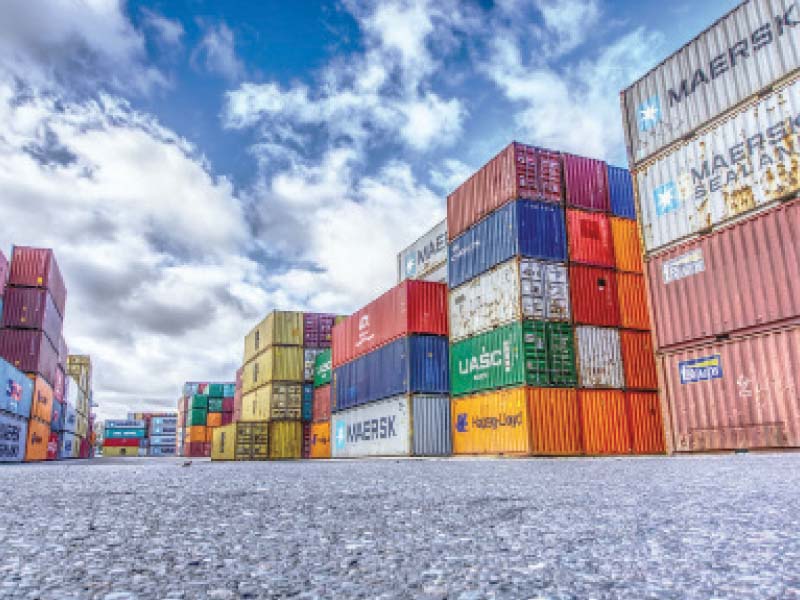
The balance of payments problem is the Achilles heel of Pakistan’s economy.
Whenever the economy is about to take off, the arrow of rising imports pierces our heels and then our journey is brought to an abrupt end. It is not only growth that is hampered by the balance of payments problem, it also feeds into the spiral of inflation.
For the scope of this article, let’s focus on the link between growth and balance of payments crisis. There are a few major reasons for this ever-recurring problem – worsening terms of trade, inelastic imports and inelastic basic primary sector exports.
Pakistan is a relatively young country with a burgeoning population entering the labour force every year. An estimated 7% of real gross domestic product (GDP) growth is required to accommodate this influx.
Although historically Pakistan has had good spells of growth averaging over 7% in the 1960s and the 1980s, now it has become a major challenge and Pakistan’s average growth over the last decade has remained shy of the 4% mark.
This inability of the economy may turn the country’s demographic dividend (young and growing population) into a curse.
The primary reason behind the low growth is the constraint of balance of payments crisis on GDP growth.
According to academic research, Pakistan can only sustain growth of up to 4%, beyond which import bill starts to increase to unsustainable levels. This eventually translates into a balance of payments crisis and Pakistan finds itself at the doorstep of the International Monetary Fund (IMF) or other international lenders.
Stagnant exports are a major problem in this regard. Pakistan’s exports have remained concentrated in commodities (rice) and basic textile (grey fabric). This is a major part of the problem.
Although we were the pioneers in textile, we could not graduate to high value-added exports. Part reason for this is the easy money-making philosophy of the traditional entrepreneurs.
Whenever businesses start making money, they invest the surplus earnings in real estate and stock market instead of jacking up research and development (R&D) budgets. In practicality, innovation should follow the surplus profits and new product development must result.
However, this is not the case and hence personal wealth of entrepreneurs may have multiplied through investment in real estate or stocks but exports have remained stagnant over time at around $20-25 billion.
Furthermore, Pakistan’s imports are inelastic. It imports crude oil of around $10-12 billion and edible oil of around $3-4 billion. Along with this, we as a society have started to rely more on imports.
The increased penetration of imported goods into people’s daily lives has had an impact on the balance of payments. Furthermore, imports are price inelastic, ie rupee depreciation has only a limited impact on the quantum of imports.
Therefore, a balance of payments crisis becomes inevitable as soon as growth picks up in Pakistan.
Similarly, the terms of trade over the years have moved against Pakistan. The terms of trade index has declined from more than 80 (2004) to 58 (2021).
This means, on average, prices of Pakistan’s export goods have declined relative to the prices for import goods. This has deepened the balance of payments crisis in the country.
Government policies
The government has drawn criticism on the economic front. Let’s analyse the policies and their impact on the current crisis.
First of all, the policymakers are vigilant. They are at least quick to react to situations, even if not proactive. They didn’t wait for a $19 billion current account deficit for changing the policy stance.
They have built healthy foreign currency reserves, albeit through borrowing, to cater to the rising imports. They introduced policies to discourage consumer finance and recently imposed cash margin requirements on imports to control trade deficit.
The streamlining of foreign remittances and sticky inflows through the Roshan Digital Account (RDA) are also major policy victories for the government.
Furthermore, in the much-swelled import bill, there is also a sizeable chunk of Temporary Economic Refinance Facility (TERF)-related machinery (worth around $4 billion), which will over time contribute towards increasing exports.
The government has made sincere efforts to increase the capacity of exporters and this will eventually pay dividends. Furthermore, these investment-related imports of export-oriented machinery will eventually contribute towards improvement in terms of trade of the country as well.
The changing political situation in Afghanistan has also a role to play in this mess. Pakistan’s exports to them have been disturbed whereas the whole burden of their imports has befallen the feeble shoulders of Pakistan’s economy. This is expected to continue for the foreseeable future. The government is proactively importing food grain to address the shortage of food commodities and this will also contribute towards sustainable prices in future.
All in all, the policymaking on the economic front is commendable and it must be given time to pay dividends in times to come.
The writer is a banker and teaches economics
Published in The Express Tribune, October 11th, 2021.
Like Business on Facebook, follow @TribuneBiz on Twitter to stay informed and join in the conversation.






1719053250-0/BeFunky-collage-(5)1719053250-0-270x192.webp)











COMMENTS
Comments are moderated and generally will be posted if they are on-topic and not abusive.
For more information, please see our Comments FAQ